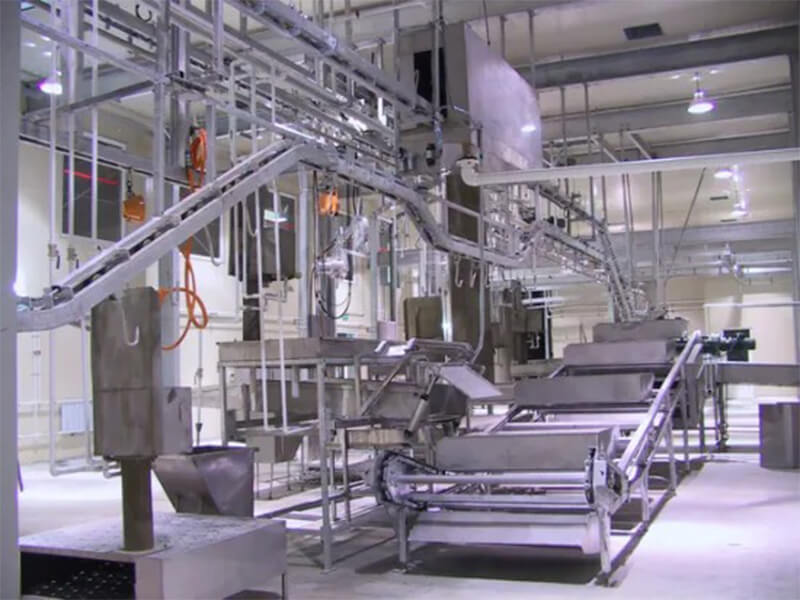
General Steps for Cattle Carcass Processing:
1. Cattle Head Processing
The initial step involves cutting off the cattle head, followed by placing it on the cutting board of the cattle head cleaning/washing equipment. Additionally, the tongue is extracted from the cattle head. Subsequently, the cleaned cattle head is hung on the hook of the cattle head washer and thoroughly cleaned with a high-pressure water gun. After the cleaning process, the cattle head is hung on the synchronous quarantine conveyor, along with the red viscera, for inspection.

2. Piercing the Esophagus
To prevent the stomach or tripe from contaminating the beef, the esophagus of the cattle is tied up using an esophageal ligature. This prevents any unwanted flow of internal organs and maintains the quality of the meat. Furthermore, the cattle’s hind legs are supported by a secondary leg support device, which positions them appropriately for the subsequent processes.
3. Opening the Chest
Using a chest opening saw or brisket saw, the chest of the cow is opened, allowing access to the internal organs for further processing.
4. White Internal Organs/Viscera/Offal Processing
The white viscera, namely the intestines and belly, are carefully scraped out from the chest cavity of the cattle. These white viscera are then dropped into a pneumatic chute designed for white visceral disposal. The chute transports the white viscera to an inspection tray on a disc-type white visceral quarantine conveyor. The pneumatic chute is subjected to a cleaning and disinfection process using a cycle of cold-hot-cold water.

5. Red Internal Organs/Viscera/Offal Processing
The red internal organs, including the heart, liver, and lungs, are removed from the cattle carcass. These organs are hung on hooks on the red viscera/cattle head synchronous quarantine conveyor for inspection.
6. Carcass Half Splitting:
The cattle carcass is split into two halves along the vertebrae of the spine using carcass splitting half saw. To prevent bone foam from splashing, a split-half splash screen is installed in front of the splitting mechanism.
7. Carcass Trimming:
Following the splitting process, the two halves of the cattle carcass undergo trimming. This involves removing any excess material from both the interior and exterior parts of the carcass. The trimmed halves are then separated from the carcass automatic processing conveyor line and proceed to the carcass weighing system for accurate weight measurement.
If you want more information, please contact us by email or WhatsApp. You can add our WhatsApp by scanning the QR code on the right.

